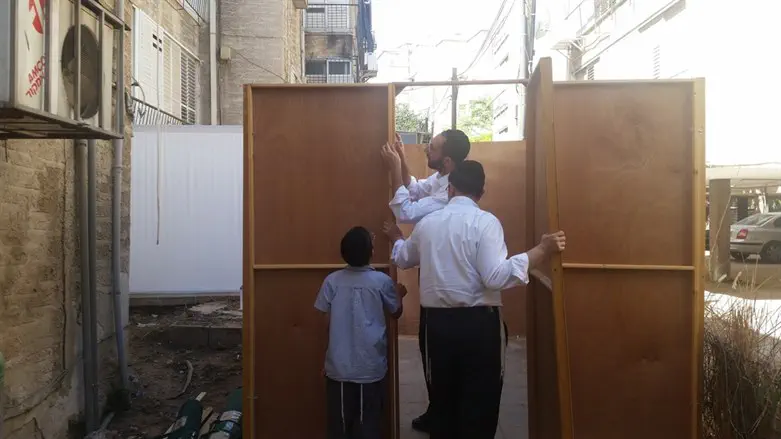
Many are familiar with the Vilna Gaon's chiddush that the letters that spell the word Sukkah [סכה] indicate the amount of walls permitted.
The samech [ס] is four-sided and closed to reference four walls, the chaf [כ] is three-sided to indicate three walls and the hei [ה] has two lines with a small line in the middle to permit a sukkah with two walls and a bit more.
However, there seems to be a discrepancy relating to the hei because there is a small gap between the middle line and the top, and yet we know there must be a connection between the walls of a kosher sukkah.
It may be said that the hei is referencing another hei: that is, the first letter of the term used to connote laws that are not explicitly in the Torah, but were told to Moses: Halackhah le'Moshe mi'Sinai. Within this Sinaitic halakhic framework, there are three laws that apply to a Sukkah which consider gaps as connected:
In dofen akumah, the bent wall, a protrusion from the house structure can be combined as part of the wall even though it now becomes a gap of non-kosher schach. Lavud allows empty spaces between walls to be connected so long as they are less than three tefachim (a halakhic measure) from each other. Finally, gud asik allows an imaginary line to be drawn upwards as a connector even though there's empty space.
This idea of connecting empty spaces would coincide with the Vilna Gaon's holding that Sukkot is a commemoration of the Clouds of Glory, a manifestation of space that protected the Jews like a wall.
We know that we 'borrow' halakhot from Pesach to Sukkot, such as when in the month to celebrate and the halakhic amounts, shiurim, of food to eat. In this way, we may borrow an idea from Pesach to Sukkot relating to the gap in the hei.
The letters in the words chametz חמץ and matzah מצה, if rearranged, spell the same exact word, save the space in the hei, which prevents it from being a chet. Therefore, the difference between moving from a state of chametz, impurity, to a state of matzah, purity, is a little space. One need only take a small step and one's life can be turned around.
This would complement the applicable halachot of filling gaps on Sukkot: And if we open a space for G-d, He will complete the connection.